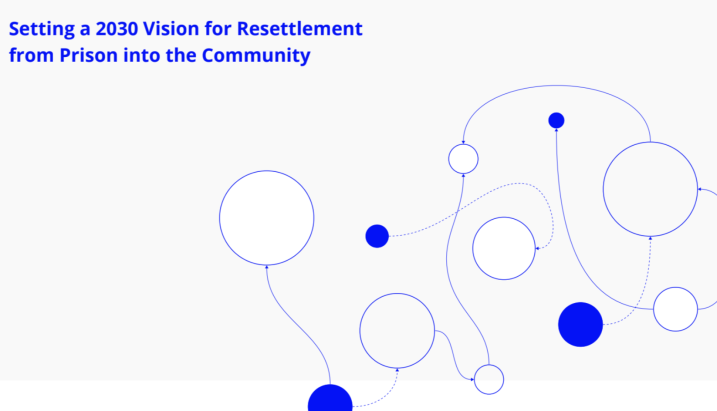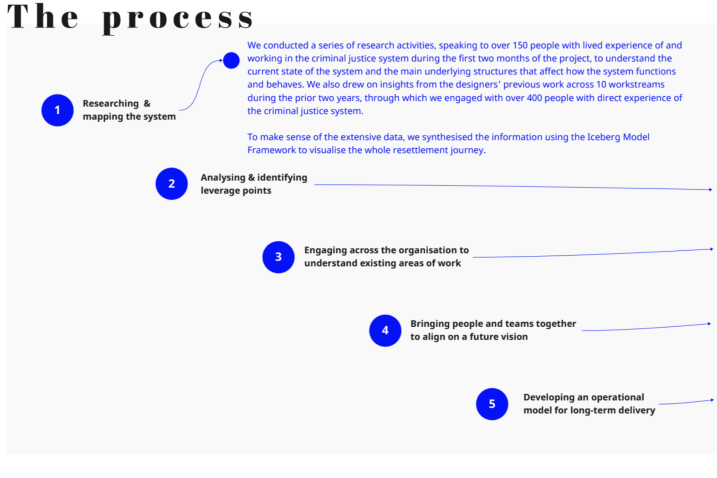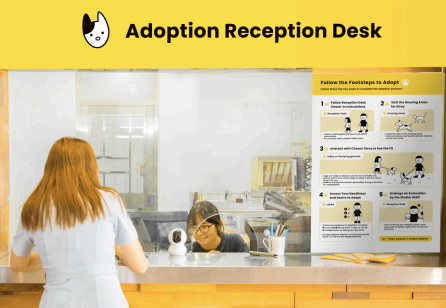Introduce project
The project brought together 3 service designers and 3 policy makers to analyse the current state of the prison resettlement system and develop an ambitious but deliverable roadmap for long-term change.
What was the context & industry sector?
In 2021, almost 80% of crime was committed by someone who had offended previously.1
The Ministry of Justice has estimated that reoffending costs society approximately £18.1 billion a year.2
What was the challenge / brief?
With that in mind, in late 2022, the UK Ministry of Justice wanted to establish a clear long-term vision for how people’s resettlement needs are identified and addressed from day 1 in prison until after they’re released, to ensure they can resettle effectively back into the community, with the ultimate aim of protecting the public and reducing reoffending. The vision needed to be comprehensive, reflective of the incredibly complex nature of the underlying forces driving reoffending, but also comprehensible and deliverable.
Target market
People who are and have been in custody, and the government department and civil society actors they engage with across the justice system.
Objectives
Establish a vision and delivery model for resettlement from prison that’s ambitious and outcome focused, but achievable within current (and future) political and organisational constraints (budget, team skills and setup, etc).
As such, it would need to take into account the perspectives of people in prison and on probation, frontline staff and managers across the prison and probation system, and charities and other groups who work with people in prison and on probation. It would need to be informed by existing government policy and operational realities. In short, it would need to include an accurate representation of the as-is state of the criminal justice system, and provide a to-be vision for reducing reoffending that is desirable, feasible, and viable.
1 https://www.gov.uk/government/statistics/first-time-entrants-fte-into-the-criminal-justice-system-and-offender-histories-year-ending-december-2021
2 https://www.nao.org.uk/reports/improving-resettlement-support-for-prison-leavers-to-reduce-reoffending/










Share your thoughts
0 RepliesPlease login to comment